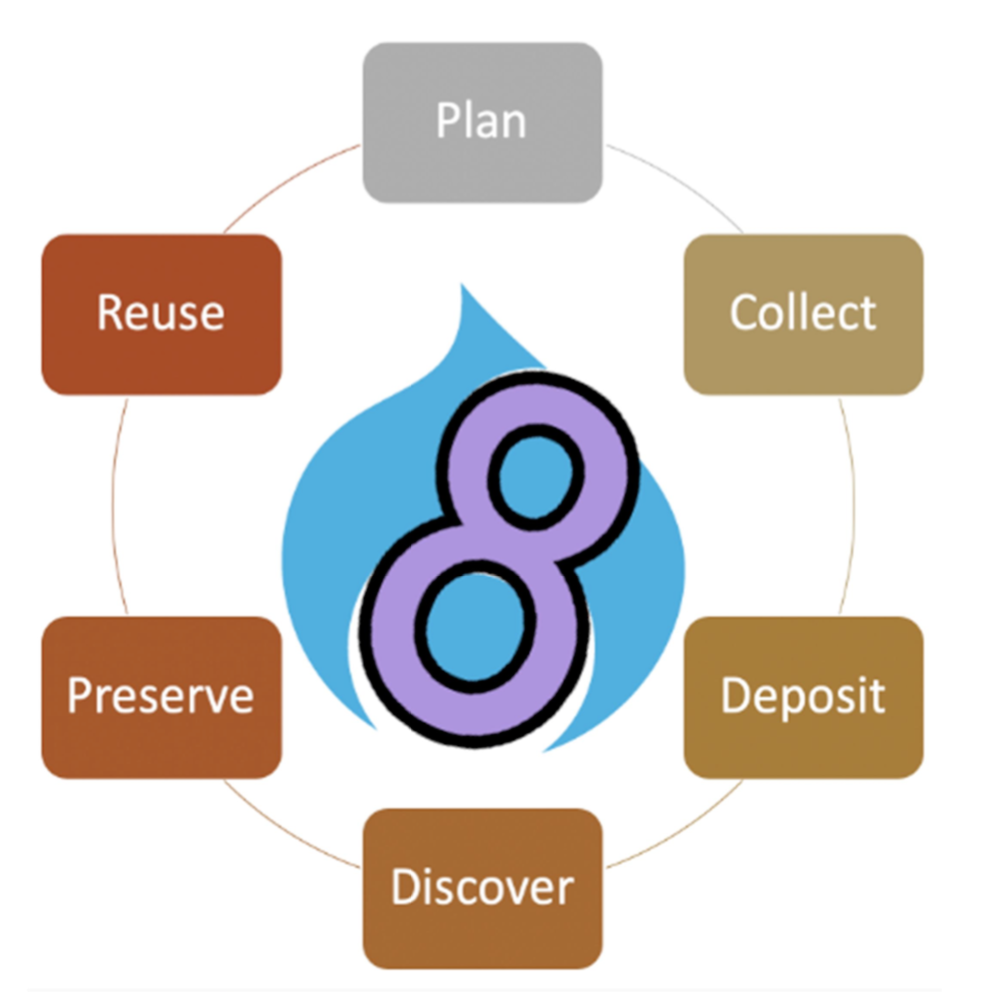The Islandora Research Data Management (RDM) Platform builds on Islandora 8 to add features to support the research data lifecycle: planning, deposit, publication, citation, sharing, and preservation.

One of the main goals in designing the Islandora RDM Platform was to create an out-of-the-box profile (with configurable but sensible defaults) for institutions who want to create and control their own research data repositories. Utilizing the Islandora 8 framework, the Islandora RDM Platform was designed to provide the following features:
Discovery
- Search/browse using SOLR and Facets o XML Sitemaps
- OAI-PMH endpoint
- Expose structured metadata
- Aggregation of dataset metadata
Metadata Interoperability
- Metadata based on DataCite Metadata Schema 4.2. o Standard vocabularies
- Machine-readable metadata endpoints
- Tombstone metadata maintained
Persistent ID Creation, Use, and Maintenance
- DOI minted via DataCite Canada
- Authentication using ORCID
- ORCID, GRID, FundRef identifiers are integrated into metadata
FAIR Services Registries, APIs, and Protocols
- Endpoints provided for machine readable metadata
- Islandora 8 REST API is available and documented
- Repository information available through OAI-PMH request verb “Identify”
Metadata Deposit and Harvest
- Users can describe, upload datasets and files o Batch deposits supported
- OAI-PMH harvesting supported
Identity Management
- Authenticate using ORCID credentials
Storage
- Flysystem provides a storage abstraction layer. Integrations for local, Fedora, SFTP (Server mounted on Compute Canada instance), and Amazon S3
- Transfer - with Globus via an installed Globus Server
Other
- Data Management Planning Tool
- Display Citation
- Virus Scan
- Editorial Workflows
- BagIt Microservice
- Event Logging
- Versioning for datasets and media
